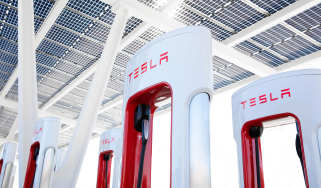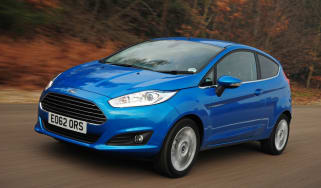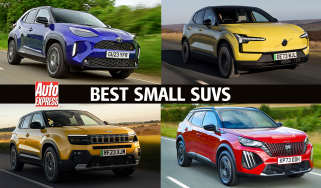Mercedes E300 Hybrid
Groundbreaking Mercedes E300 Hybrid is very clever, but is it too expensive?
With more supple suspension to suit its otherwise relaxed and refined character, the E300 would have stood a stronger chance here. The diesel engine and electric motor work really well together and the auto transmission is virtually seamless. With some minor tweaks to the dated interior and changes to the suspension, the revised model could be a winner.
On the surface, the traditional E-Class might not seem like the most obvious candidate for Mercedes’ latest technological breakthrough. Yet in the fierce battle for fleet sales, the brand needed a lift to help it take on BMW’s class-leading EfficientDynamics cars. This E300 Hybrid could potentially steal a march on all its executive rivals by becoming the first big saloon to combine an efficient diesel engine with a small electric motor. It lowers CO2 emissions to only 111g/km and pushes up official fuel economy to 67.3mpg.
However, aside from the subtle BlueTEC badge on the bootlid, there is nothing to tell this E-Class apart. Although 17-inch alloys are standard, our test car’s 16-inch rims are a no-cost option that lower emissions to 109g/km. Unfortunately, they also rob the Mercedes of some much-needed on-road presence – and while its exterior has aged gracefully enough, it looks dated alongside the fresher 5 Series.
More reviews
In-depth reviews
Road tests
- New Mercedes E-Class Estate 2024 review: packed with tech, but lacking a soul
- New Mercedes E-Class 2024 review: a technical tour de force
- New Mercedes E 300 e plug-in hybrid 2023 review
- New Mercedes E-Class Cabriolet 2021 review
- New Mercedes-AMG E 53 Estate 2021 review
Used car tests
A mid-life styling refresh that is due to appear at next week’s Detroit Motor Show should sharpen up the E-Class’s looks. Until then, our focus will be firmly fixed on the groundbreaking engineering which lies beneath the bodywork.
The lithium-ion batteries are stored neatly under the back seats, so both the 505-litre boot and spacious rear compartment remain untouched. Even so, the E-Class is less practical than its rival. A narrower boot opening and higher loading lip mean the BMW is easier to fill with luggage, and the 520d has the edge when it comes to legroom, too, thanks to a much longer wheelbase than the Mercedes.
The E-Class still feels luxurious, though, as the generous standard kit list includes an electrically adjustable driver’s seat, leather trim, parking sensors front and rear and dual-zone climate control. However, the upright dash and high seating position are obvious signs of age inside, and the plastics are not up to the same high standard set by the likes of the Audi A6. Perhaps more worryingly, there is nothing in the E300 that justifies its near-£40,000 tag, and gadgets such as sat-nav and the excellent DISTRONIC radar-guided cruise are costly options.
The only interior tweaks over the standard car are a Lexus-style energy monitor that shows how the power is being shuffled between the engine and the electric motor, and a dial that displays the power and charge status of the batteries. Still, the Hybrid does have one major trick up its sleeve at the track – serious straight-line performance.
It blitzed the BMW from a standing start and completed 0-60mph in only 7.4 seconds – over a second quicker than the 520d ED. Part of this turn of speed is due to the gutsy 2.1-litre diesel from the 250 CDI that produces an impressive 500Nm from a mere 1,600rpm. Push the throttle hard, though, and the 20kW motor provides an additional 27bhp and up to 250Nm of extra torque – giving the E300 the speed to rival some six-cylinder opposition.
The seven-ratio auto box ably manages the change from electric to diesel power at low speed, even if there is still the occasional jerk. However, despite its performance at the track, the E300 disappoints on the road. Lowering the suspension by 15mm improves the aerodynamics, but it’s had a dramatic impact on the ride, and the car we drove bounced and thudded over bumps a normal E-Class would soak up with ease.
This is a shame, as otherwise the Hybrid would make a superb long-distance cruiser. The engine is very refined and we returned a an excellent 46.3mpg on a varied route – comfortably more than the lighter BMW. Yet for all the Merc’s superiority in certain areas, both private and fleet buyers will have a tough time making the sums add up. Over three years, the E300 will lose £8,045 more than the 5 Series thanks to much weaker residuals and a higher asking price, and the slim tax savings for fleet buyers are not enough to make it a good investment. Will that cost it dear here?


